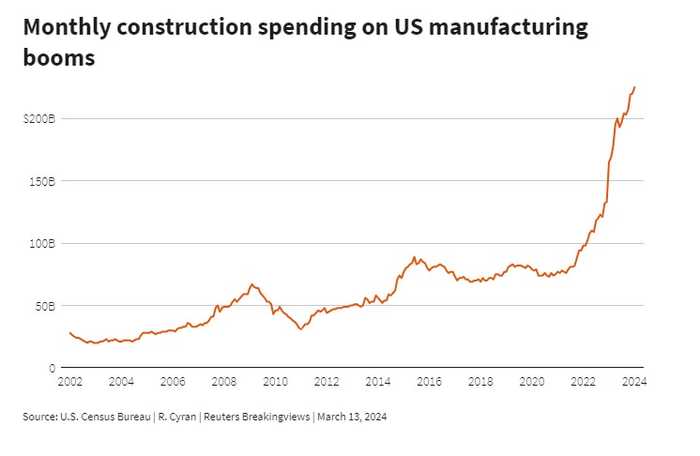Published 19:41 IST, March 16th 2024
Biden’s subsidies are working a little too well
Chips Act was designed to bolster US semiconductors and had $39 billion of financial aid.
- Republic Business
- 2 min read

Crowd surfing. The U.S. subsidy machine is grinding into gear. The coming days are likely to see announcements of big handouts for chipmakers, designed to help them increase domestic production. And companies are already availing themselves of tax perks targeted at infrastructure and sustainable energy. These acts of largesse by President Joe Biden’s administration are working, but with side effects.
The Chips Act of 2022 was designed to bolster U.S. semiconductors, and contained $39 billion of financial aid for domestic production, about 70% of which was subsidies for production of advanced chips. Producers can also receive tax credits equal to 25% of the qualifying cost of their facility. The law’s sibling, The Inflation Reduction Act, gives incentives for the production and purchase of clean energy, storage and efficiency.
Recipients, though, are competing for scarce resources when turning their plans into reality. Construction costs for factories and industrial buildings have risen 40% over four years according to the U.S. Bureau of Labor Statistics. Samsung Electronics’ chip plant in the Texan town of Taylor was $8 billion above initial estimates last year according to Reuters' sources. Finding enough skilled workers is also a problem, and is one reason Taiwan Semiconductor Manufacturing's second chip plant in Arizona has been delayed.
Even as the value of subsidies falls, measured in purchasing power, demand for them is red hot. The Commerce Department said in February that advanced chipmakers are requesting $70 billion of assistance, or twice as much as is available. The fact there are more guests than cake is a concern, especially in a semiconductor industry known for historical booms and busts. Japan, Europe and China are all pursuing their own domestic chip-making campaigns.
The problems these subsidies attempt to target are real. American infrastructure is undeniably underinvested and overweathered. In chips, the U.S. produces about 10% of the world’s semiconductors and none of the most advanced sort, and the new investments put it on path to produce 20% of all advanced logic chips by 2030. But the reality of subsidized investment, with cost overruns and herd-like thinking, is messy. The risk is that some of the handouts fall short, and others work too well.

Updated 19:41 IST, March 16th 2024